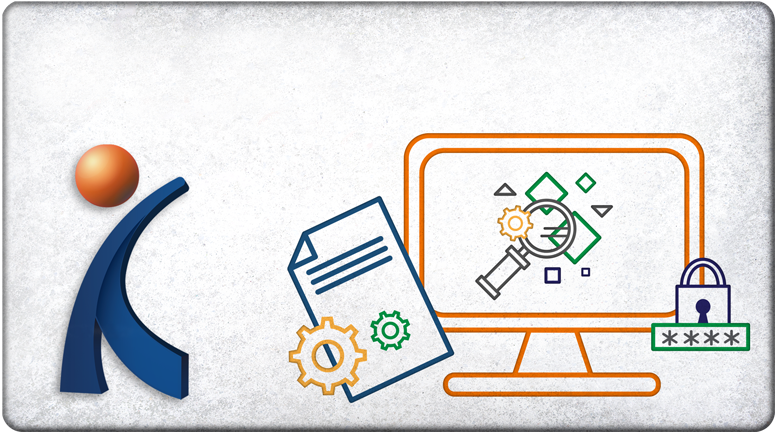We can't find the internet
Attempting to reconnect
Something went wrong!
Hang in there while we get back on track


Training
Training
The Iddeal Concepts, Inc. Team provides industry leading training for Code Program Engineers, training on all modules of the Iddeal Software Suite® and its plant implementation, Nondestructuve Examination (NDE) instruction and qualification, and specific "topic" courses, some of which have been developed and presented specifically for EPRI and ASME.
Our instructors are industry Subject Matter Experts (SME's), meet industry instructor training requirements, some are qualified as NDE instructors, and all of our instructors have previous employment as Utility Engineering Program Owners at single and/or multiple unit sites. They have previously completed utility qualification cards in those positions, and been responsible for ownership and implementation of ISI, IST, Snubber, MOVs, AOVs, CISI, PT, NDE, QA/QC and R/R programs, as applicable.
Not only do we provide "generic" training but also specialize in "client position specific" training utilizing client implemented Code and Regulations to meet industry requirements, and provide course content that your Training Department can approve and accept for position specific qualifications.
Several options are available to facilitate training:
- Remote - training can be performed remotely using computer access at a client's facility or each attendee's remote workspace
- On-site - training can be performed on-site at a client's facility with direct instructor to attendee interaction
- On-location - training can be performed in person at the Iddeal Concepts, Inc. training facility in Crystal River, Florida
- Hybrid - training can be performed using a mixture of on-site and remote attendance
Iddeal Software Suite® Training
The IDDEAL Software Suite® is intended to provide Engineering Programs personnel an "overall solution" for management and implementation of individual program requirements (ISI, IST, IVVI, etc.), scheduling, testing results and overall compliance. The IDDEAL Software Suite® comprises a system for electronic storage and retrieval, user access, integration of regulatory requirements and manuals into an active component database. These component manuals are further defined as a program plan(s), with inspection scheduling, datasheets and final reporting of results.
Typical training involves an initial "introduction and use" and then additional "advanced function" training. These training courses are intended to be presented in conjunction with actual software program demonstration and use via computer-based training, classroom lecture and be supplemented with "hands-on" practical demonstrations for verification of proficiency (Lab exercises and tests).
Training typically focuses on database content and setup for site-implementation, and the students perform hands-on data input/modifications, as required. Most individual site-specific training is planned per the associated module and user skills, and typically involves site work processes and hands-on training using actual site data. Basic knowledge of non-destructive examination terminology and equipment is recommended.
Typical module training consists of:
Version 8.8
- CertWorks®
- EquipWorks®
- IDDEAL® QC Module
- SnubbWorks®
- CompWorks®
- FACWorks®
- Buried Piping
- Service Water
Version 9
- Inservice Inspection (ISI) and Balance of Plant (BOP)
- Containment
- Pressure Testing
- Inservice Testing (IST for Pumps and Valves)
- IVVI (BWRVIP, MRP-226)
- Appendix J
- Integrated Reporting Services
- Field Datasheet Interface (FDI)

ISI ASME Code Programs Training / ISI Program Engineer Training
This course is designed for Inservice Inspection (ISI) Programs and Engineering Program personnel who may not be familiar with ASME Section XI, the governing regulations, and industry commitments. This course will also provide experienced Engineering Program personnel requirements regarding some of the convoluted and controversial areas of ASME Section XI and how to maneuver through the frequent cross-references within the Code.
This course will also cover aspects necessary for an Inservice Inspection (ISI) Program Manager who is responsible for developing, implementing, and maintaining Inservice Inspection (ISI) and Augmented Inspection Programs. This course will also include discussion regarding Risk-Informed Inservice Inspection (RI-ISI), Containment Inspection (CISI), System Pressure Testing (SPT), Repair/Replacement, and typical augmented and owner elected inspection programs.
Regulatory requirements and appropriate guidance are discussed as key components of a thorough program. This course focuses on the principles and philosophies of Section XI, as well as the relationship between the ASME Code and regulatory enforcement requirements for in-service inspection of nuclear power plant components.
The material is presented in an interactive manner for comprehensive practical applications, which will require active participation from the students. After completion, participants should obtain insights for effective use of Section XI that can lead to program optimization and possible reduction in plant operating costs.
- Principles and background of an Inservice Inspection Program
- Regulatory and enforcement requirements regarding ASME Section XI as they relate to an Inservice Inspection Program
- In-service inspection requirements for ASME Class 1, 2, 3, MC, and CC Nuclear Components
- Requirements for repair, replacement, modification, maintenance activities, and pressure testing of ASME Class 1, 2, 3, MC, and CC Nuclear Components
- Basic requirements for flaw evaluation, acceptance criteria, and alternatives for evaluation of degraded components
- ASME Section XI documentation requirements and ISI Program Management
IST ASME/O&M Code Programs Training (Pumps, Valves, and Snubbers)
This course is designed for comprehension of the American Society of Mechanical Engineers (ASME) Code for Operating and Maintenance (O&M) of Nuclear Power Plants. The curriculum has been designed to meet all experience levels related to Engineering Programs. The material is presented in an interactive manner for comprehensive practical applications, which will require active participation from the students.
ASME O&M Code, Section IST establishes the requirements for preservice and inservice testing and examination of Pumps, Valves, and Dynamic Restraints (snubbers).
To effectively understand and implement the requirements of ASME O&M Code requires a general knowledge of ASME and its process for publishing technical requirements; plant licensing process and how safety classification is applied to systems and components; how State and Federal regulations affect IST programs.
After completing this course, participants will obtain insights for effective use of the O&M Code and the necessary fundamentals of the regulations and requirements affecting the management and implementation of a thorough and successful In-service Testing (IST) program.
Minimum Learning Objectives - ASME O&M Code
- The O&M Code identifies the components subject to test or examination
- Describe the basic structure of the O&M Code
- Describe the examination methods and techniques used to perform preservice and inservice examinations and tests
- Define the required content of Inservice Testing Plans and Schedules
- Identify Code Classification and Testing Basis for Testing or examination of Class 1, 2 and 3 components
- Describe the Owner's responsibilities, test methods, testing frequency, parameters to be measured and evaluated, acceptance criteria, corrective actions, personnel qualification, and record keeping
- Understanding Technical Specification Impact
- Describe the Federal Regulations directly affecting the Inservice Testing programs
Training Classes and Content
All course outlines and specific agendas are provided upon request (contact Iddeal Concepts, Inc. to obtain a detailed description of each course module). All software training is intended to be presented in conjunction with actual software program demonstration via computer-based training, classroom lecture and supplemented with "hands-on" practical demonstrations.
